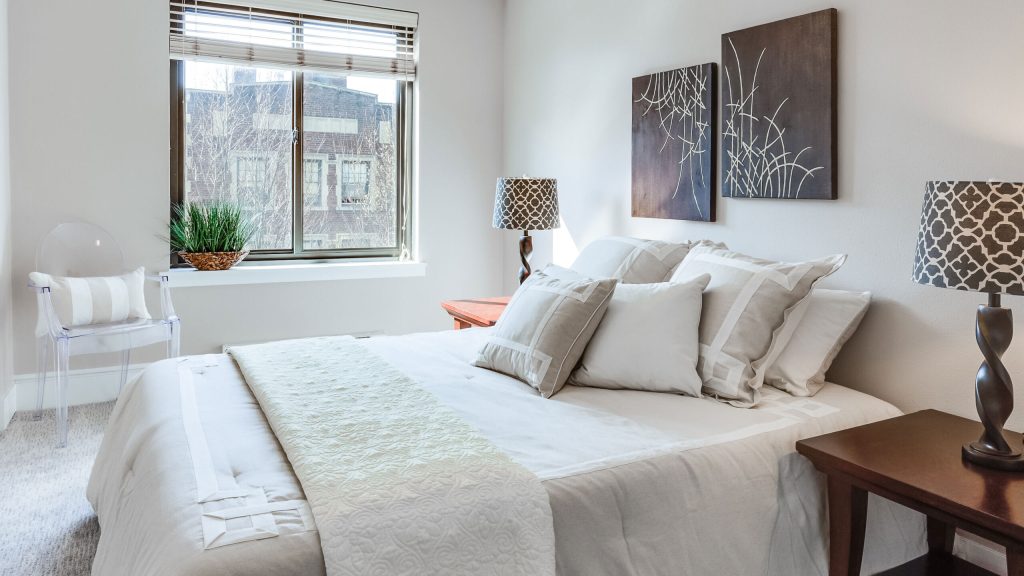
Choosing colors that make your space feel larger is a powerful interior design technique. Have you ever walked into a room and instantly felt cramped or, conversely, felt a sense of openness and spaciousness? The color choices significantly impact this feeling. Many people struggle with making small spaces feel larger, often feeling overwhelmed by limited square footage and unsure how to maximize their available area. Fortunately, the solution may be simpler than you think—it’s all about understanding how color affects our perception of space. This thorough guide will walk you through the art of selecting colors that visually expand your rooms, offering practical strategies and expert advice. We’ll cover choosing the right color palettes, the function of lighting, incorporating reflective surfaces, and much more. Prepare to transform your home with a fresh, spacious feel!
Light and Airy Color Palettes for a Larger Feel
The Power of Light Colors
Light colors, such as whites, creams, pastels, and light grays, are your optimal allies when aiming to make a room appear larger. These hues reflect light, creating an illusion of depth and openness. Consider a soft, creamy white on the walls, complemented by pale blue or lavender accents. This combination exudes tranquility and spaciousness.
Incorporating Light-Reflecting Surfaces
Mirrors and glossy surfaces are phenomenal tools for creating the illusion of a more expansive space. Placing a large mirror strategically on a wall can effectively double the apparent size of a room. Similarly, incorporating shiny furniture or metallic accents can reflect light, adding to the overall spaciousness.
Strategic Color Blocking
While light colors are generally preferred, strategic color blocking can also be used effectively. For instance, you could paint one wall a darker, bolder color to create a focal point, while maintaining lighter colors on the remaining walls. This prevents the room from feeling completely washed out. Experiment with this technique, using your darker accent color sparingly and focusing on a single wall.
Related Post : Tips for Choosing Outdoor Paint That Withstands Weather
Examples and Case Studies
Imagine a small bedroom with dark walls and heavy furniture. It would naturally feel cramped and claustrophobic. However, by repainting the walls in a soft, airy white or a gentle gray, and replacing the heavy furniture with lighter pieces, the room would instantly feel more spacious and welcoming. Similarly, a small living room can be transformed by adding a large mirror on a wall opposite a window, reflecting the natural light and creating a sense of depth and expansiveness.
Choosing the Right Color Temperature
Warm vs. Cool Colors
Understanding color temperature is key to choosing colors that enhance your space. Warm colors (reds, oscopes, yellows) tend to advance, making a space feel cozier but potentially smaller. Cool colors (blues, greens, purples), on the other hand, recede, creating a sense of depth and making a room feel larger. However, using only cool colors can also make a space feel cold and uninviting.
Balancing Warm and Cool Tones
The key is balance. You can use a dominant cool color on the walls to create the spacious illusion, while using warm accents through furniture, artwork, or accessories to add warmth and personality to the room. Consider a cool gray base on the walls, accented with warm wooden furniture and pops of yellow or oscope in cushions or artwork.
Color Psychology and Space Perception
The perception of space is not solely dependent on color, but also on our psychological response to it. Cool colors are often associated with calmness and serenity, which contributes to the feeling of spaciousness. Conversely, warm colors can induce a sense of comfort and intimacy, but if overused, can make a space feel confined.
Using Color to Create Visual Flow
To visually expand the space, it is crucial to maintain a cohesive color scheme throughout the room. Use this flow to link varied areas, avoiding stark contrasts that can disrupt the visual expansion. This visual flow guides the eye, preventing it from feeling trapped in a limited area.
The function of Lighting in Enhancing Space
Natural Light is Key
Maximize natural light. Open curtains and blinds during the day to let in as much sunlight as possible. This is the simplest and most effective way to make a space feel significantly larger. Even small amounts of extra light can have a big impact.
Artificial Light Placement
Strategic lighting also plays a critical function. Instead of relying on a single overhead light, incorporate various light sources such as floor lamps, table lamps, and wall sconces to create a layered, more ambient lighting scheme. This adds depth and prevents the room from feeling flat.
Light Color Reflection
Remember, light colors reflect light more effectively than dark ones. The light paint in a room will bounce light around, amplifying brightness and making the room appear more expansive. Consider the paint’s Light Reflectance Value (LRV) when choosing the color.
Avoid Harsh Shadows
Harsh shadows can make a space feel smaller and darker. Ensure your lighting creates a soft and even illumination throughout the room. Avoiding direct, glaring light sources will prevent shadows and make the space feel much more welcoming and open.
Visual Tricks and Design Elements
Vertical Lines to Add Height
Vertical lines visually elongate a space, making ceilings appear higher. Incorporate vertical stripes in wallpaper or curtains or use tall, slender furniture pieces to achieve this effect. This technique is especially effective in rooms with low ceilings.
Minimalist Approach
Clutter makes a space feel smaller. A minimalist approach to decor, keeping only essential furniture and accessories, will significantly boost the perceived size of your room. Less is truly more when aiming for spaciousness.
Furniture Placement
Avoid overcrowding the room with large, bulky furniture. select pieces that are proportionally sized to the room. Consider multifunctional furniture, such as sofas with built-in storage, to maximize space efficiency.
Create Visual Depth
Using rugs and area carpets to define areas within a room can create visual depth and break up large, open spaces. This technique is especially helpful in studios or open-plan layouts.
Combining Color with Other Design Strategies
Texture and Patterns
While light colors are crucial, don’t neglect texture and patterns. Light textures like linen or cotton add warmth and visual interest without overwhelming the space. Subtle patterns can add visual intrigue without reducing the open feel of the room.
Choosing the Right Furniture
Light-colored, sleek furniture allows light to flow more complimentaryly, creating a sense of openness and airiness. Avoid bulky, dark furniture pieces that can visually compress a space. Opt for furniture with thin legs and light upholstery.
Utilizing Mirrors and Reflective Surfaces
Mirrors can double the perceived space in a room, and using reflective surfaces like glass-topped tables or metallic accents, can help reflect light and enhance the illusion of spaciousness. Strategic placement of these elements is key.
Case Studies: Combining Strategies
Imagine a small living room. By using a cool-toned light gray on the walls, incorporating a large mirror, selecting light-colored furniture, and adding a vertical striped rug, you can achieve a dramatically more spacious feel, demonstrating the synergistic effect of implementing multiple strategies.
In conclusion, choosing the right colors can dramatically impact the perceived size of your space. By strategically using light and airy colors, incorporating reflective surfaces, and creating visual flow, you can make even small rooms feel open and spacious. Remember to consider the overall style of your home and your personal preferences while implementing these techniques. Start experimenting with color today and transform your living space into a haven of airy elegance! Now that you’ve learned how to select colors that make your space feel larger, it’s time to put your knowledge into action. Take a look around your home, select a room you’d like to enhance, and get started on your color makeover!
